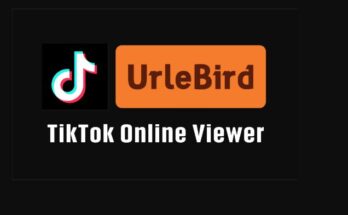Introduction to the Internet of Things (IoT)
Welcome to the exciting world of the Internet of Things (IoT)!
In a digital landscape where connectivity is king, IoT has emerged as a game-changer, revolutionizing how we interact with technology and the world around us. From smart homes to industrial automation, IoT is reshaping industries and improving efficiencies like never before. But behind every successful IoT project are robust development tools and platforms that empower developers to bring their innovative ideas to life.
Join us as we explore the top 5 IoT development tools and platforms for 2024!
Importance of IoT Development Tools and Platforms
In the Internet of Things (IoT) realm, development tools and platforms play a crucial role in bringing innovative ideas to life. These tools provide developers with the necessary resources to create efficient and scalable IoT solutions. By utilizing these platforms, developers can streamline the process of building connected devices and applications, ultimately accelerating time-to-market.
The importance of choosing the right IoT development tool cannot be overstated. It can make a significant difference in an IoT project’s performance, security, and overall success. With a wide range of tools available in the market, selecting one that aligns with specific project requirements is essential for achieving desired outcomes.
Furthermore, IoT development platforms offer robust features such as data analytics, device management, and cloud integration. These capabilities empower developers to design sophisticated IoT solutions to collect and analyze data in real time, leading to actionable insights and enhanced decision-making processes.
Staying informed about the latest advancements in IoT development tools and platforms is key for organizations striving to stay competitive in today’s rapidly evolving digital landscape.
Criteria for Choosing the Best IoT Development Tools and Platforms
Several key criteria must be considered when selecting the best IoT development tools and platforms for your projects. Compatibility with your existing systems is crucial to ensure seamless integration. Look for flexible and scalability tools to meet your current and future needs.
Security is paramount when dealing with IoT devices. Choose a platform that prioritizes data protection and offers robust security features to safeguard against potential cyber threats.
Additionally, consider the level of support and resources the tool or platform provides. Access to comprehensive documentation, tutorials, and customer support can make a significant difference in the development process.
Scalability is another important factor to keep in mind. Opt for tools that can easily scale up as your project grows without compromising performance or functionality.
Cost-effectiveness plays a vital role in decision-making. Evaluate pricing structures carefully to ensure you get the best value for your investment while seamlessly meeting all your requirements.
Top 5 IoT Development Tools and Platforms for 2024:
If you’re diving into the world of Internet of Things (IoT) development, having the right tools and platforms at your disposal is crucial for success. In 2024, the landscape of IoT development is ever-evolving, with new advancements and innovations shaping the industry.
Among the top players in IoT development tools and platforms are Microsoft Azure IoT Suite, IBM Watson IoT Platform, Amazon Web Services (AWS) IoT Core, Google Cloud IoT Core, and Cisco Kinetic for Cities. Each platform offers unique features and capabilities to streamline development and enhance device connectivity.
These tools provide a comprehensive solution for building cutting-edge IoT applications, from cloud services to data analytics to device management. As technology advances rapidly in IoT, staying up-to-date with the latest tools and platforms will be key to staying competitive in this fast-paced industry.
A. Microsoft Azure IoT Suite
Are you looking for a powerful IoT development tool? Microsoft Azure IoT Suite is here to impress. Developers can easily create and manage their IoT applications with its robust features and user-friendly interface. The seamless integration with other Microsoft services provides a smooth experience.
Azure’s scalability allows your IoT projects to grow effortlessly as your needs expand. The platform offers advanced security measures to protect your data and devices, giving you peace of mind.
By utilizing Azure’s analytics capabilities, you can gain valuable insights from the vast amounts of data your connected devices generate. This enables you to make informed decisions and optimize performance effectively.
With Microsoft’s continuous updates and improvements, Azure remains at the forefront of IoT development tools in 2024. Experience the innovation firsthand with Microsoft Azure IoT Suite!
B. IBM Watson IoT Platform
Are you looking for a sophisticated IoT development tool that leverages the power of AI and analytics? Look no further than the IBM Watson IoT Platform. This cutting-edge platform offers advanced cognitive capabilities to help you build innovative IoT solutions.
With the IBM Watson IoT Platform, you can easily connect devices, collect data in real-time, and gain valuable insights to drive business decisions. Its robust security features ensure that your data remains protected at all times.
One feature of the IBM Watson IoT Platform is its predictive maintenance capabilities. Analyzing data patterns can help predict equipment failures before they occur, saving time and resources.
Whether working on smart buildings, healthcare solutions, or industrial applications, the IBM Watson IoT Platform provides the tools to create scalable and efficient IoT projects.
C. Amazon Web Services (AWS) IoT Core
Amazon Web Services (AWS) IoT Core is a powerful platform that enables developers to connect devices securely and manage data at scale. It offers seamless integration with other AWS services, providing flexibility and scalability for IoT projects. With AWS IoT Core, users can easily onboard devices, collect data from them in real time, and trigger actions based on predefined rules.
One of the key features of AWS IoT Core is its device management capabilities, allowing users to register, organize, and remotely control connected devices effortlessly. The platform supports over-the-air updates, ensuring devices run the latest firmware versions without manual intervention.
Moreover, AWS IoT Core provides robust security mechanisms such as encryption and authentication protocols to safeguard data transmission between devices and the cloud. This ensures end-to-end protection for sensitive information collected by IoT applications.
In addition to these features, AWS IoT Core offers comprehensive monitoring tools that allow developers to track device health metrics, troubleshoot issues proactively, and optimize performance. By leveraging the capabilities of AWS IoT Core, you can accelerate your development process and bring innovative IoT solutions to market efficiently.
D. Google Cloud IoT Core
Google Cloud IoT Core is a robust platform that offers seamless integration with other Google Cloud services. It enables users to securely connect, manage, and ingest data from millions of globally dispersed devices. With its scalability and real-time data processing capabilities, developers can build innovative IoT solutions efficiently.
One of the key features of Google Cloud IoT Core is its device registry functionality, which allows for easy management of connected devices at scale. Additionally, the platform provides secure communication through protocols like MQTT and HTTP, ensuring end-to-end encryption for data transmission.
Moreover, Google Cloud IoT Core offers detailed monitoring and logging tools that enable users to track device connectivity status and troubleshoot issues effectively. The platform’s integration with Google Cloud Pub/Sub facilitates seamless data ingestion and analysis for actionable insights.
Google Cloud IoT Core stands out for its reliability, security features, and seamless integration with other Google Cloud services – making it a top choice for developers seeking a comprehensive IoT development tool in 2024.
E. Cisco Kinetic for Cities
Have you ever thought about how cities can become smarter and more efficient through IoT technology? Cisco Kinetic for Cities is a top-notch platform transforming urban areas into connected, data-driven ecosystems. By leveraging real-time data analytics, this tool enables city planners to make informed decisions that enhance public services and optimize resource management.
With Cisco Kinetic for Cities, municipalities can monitor various aspects such as traffic flow, waste management, energy consumption, and public safety in a seamless manner. This results in improved citizen experiences and overall quality of life within urban environments. The platform’s scalability allows it to adapt to the evolving needs of different cities regardless of their size or complexity.
By integrating sensors, devices, and networks into a unified system, Cisco Kinetic for Cities empowers municipal authorities to proactively address challenges and capitalize on growth opportunities. In an era where sustainable development is paramount, this tool is crucial in paving the way towards smarter and greener cities.
Comparison of Features and Pricing
After exploring the top 5 IoT development tools and platforms for 2024, it is evident that each option offers unique features and benefits tailored to various IoT projects. Microsoft Azure IoT Suite stands out for its comprehensive services, while IBM Watson IoT Platform excels in cognitive capabilities. Amazon Web Services (AWS) IoT Core provides robust scalability, Google Cloud IoT Core offers seamless integration with other Google services, and Cisco Kinetic for Cities specializes in urban applications.
When considering which tool or platform to choose for your next IoT project, evaluating factors such as your specific requirements, budget constraints, scalability needs, security features, and compatibility with existing systems is essential. By carefully assessing these criteria against each option’s features and pricing, you can make an informed decision that aligns with your project goals and objectives.
Whether you are a developer looking to build innovative IoT solutions or a business seeking to leverage the power of connected devices, choosing the right development tool or platform is crucial for success in today’s rapidly evolving digital landscape.
Stay updated on the latest trends in IoT technology and continue exploring new possibilities to drive efficiency, enhance customer experiences, and unlock new business opportunities through smart, connected solutions.
Good luck, game changer!
Explore our additional articles for more insights and enjoy!










